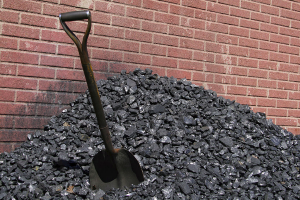 If you’re living in a rural area and you happen to have a wood stove, you’re probably living the dream. Not only are you experiencing the joys of living so close to nature, and the peace of living so far away from the city, but you’re also sleeping easy knowing that if the grid ever goes down, you can always cut down a few trees for the winter.
If you’re living in a rural area and you happen to have a wood stove, you’re probably living the dream. Not only are you experiencing the joys of living so close to nature, and the peace of living so far away from the city, but you’re also sleeping easy knowing that if the grid ever goes down, you can always cut down a few trees for the winter.
But wood isn’t the only thing you can put in your wood stove. These days most people have forgotten that there is another source of fuel that is far more attractive: the much maligned rock known as coal.
Though coal is still widely used as a source of fuel for power plants, its house-warming applications have fallen out of favor over the past few decades, likely due to environmental concerns. Even if you don’t believe all the arguments about Co2 and global warming, the smoke and ash from a coal fire can contain radioactive materials, arsenic, mercury, and other heavy metals. Coal is not something you want to burn in your house every day.
It should however, still of be of interest to preppers for occasional or emergency use. For starters, it has a very high energy density. It doesn’t have quite as many BTUs per pound as gasoline or propane, but it has at least twice as much energy density as wood. And unlike those aforementioned fuels, it doesn’t really require any special storage methods, and it’s not going to go bad. You can just leave it around somewhere on your property. Though it can catch fire, it’s not that easy to get it burning on accident. All in all it’s a very low maintenance fuel, but most importantly, it’s really cheap depending on where you live.
The location of your property is very important to keep in mind. Out of the ground, coal is nearly dirt cheap. The cheap stuff costs about $40 per short ton, or 2 cents per pound. But the cost of shipping can quickly dwarf the cost of the coal itself. If you live anywhere in the eastern half of the United States, then you don’t have much to worry about. The Western United States on the other hand has very few coal mines, so it’s probably going to cost significantly more for you there. You probably won’t be able to get a hold of any significant amount of coal in the West without incurring heavy costs.
Not only that, but you may not want most of the coal that is produced. The bulk of the coal that is produced around the world is known as bituminous coal. This is the stuff that contains a lot of those nasty substances I mentioned before, and it does not burn cleanly. You can still use it, but it would be wise to do so sparingly and mainly for emergencies.
If you can get a hold of it affordably, anthracite coal is what you want. In the United States it is only produced in Pennsylvania, and is a far superior coal compared to bituminous. That’s because it has a higher energy density, and burns with very little smoke.
Whatever you use, make sure that your stove is capable of handling coal. You don’t want to use some rinky-dink burner made of thin steel. Unless a stove is advertised for its ability to burn coal, you probably don’t want to trust anything other than cast iron. Otherwise you can use a fireplace, so long as you purchase and install a wood/coal-burning insert.
All in all, coal is a great fuel source for preppers living in rural areas. It’s something that can be cheaply and easily stockpiled on your property, and left on its own for years until an emergency occurs. You don’t have to worry about it rotting or going bad like wood or gasoline, and it doesn’t have the same storage dangers as propane or natural gas. You can just set it by your house and forget it till you need it. It will burn for a lot longer than wood too, sometimes for up to 24 hours, so you won’t have to stay up all night feeding that fire. If you want to have your home heating needs taken care of when the grid goes down, a big pile of coal is your best friend.
This article was originally published at Ready Nutrition™ on May 20th, 2016







Do you know a source for maps of abandoned/depleted coal mines? These would be quite valuable for a long term emergency.